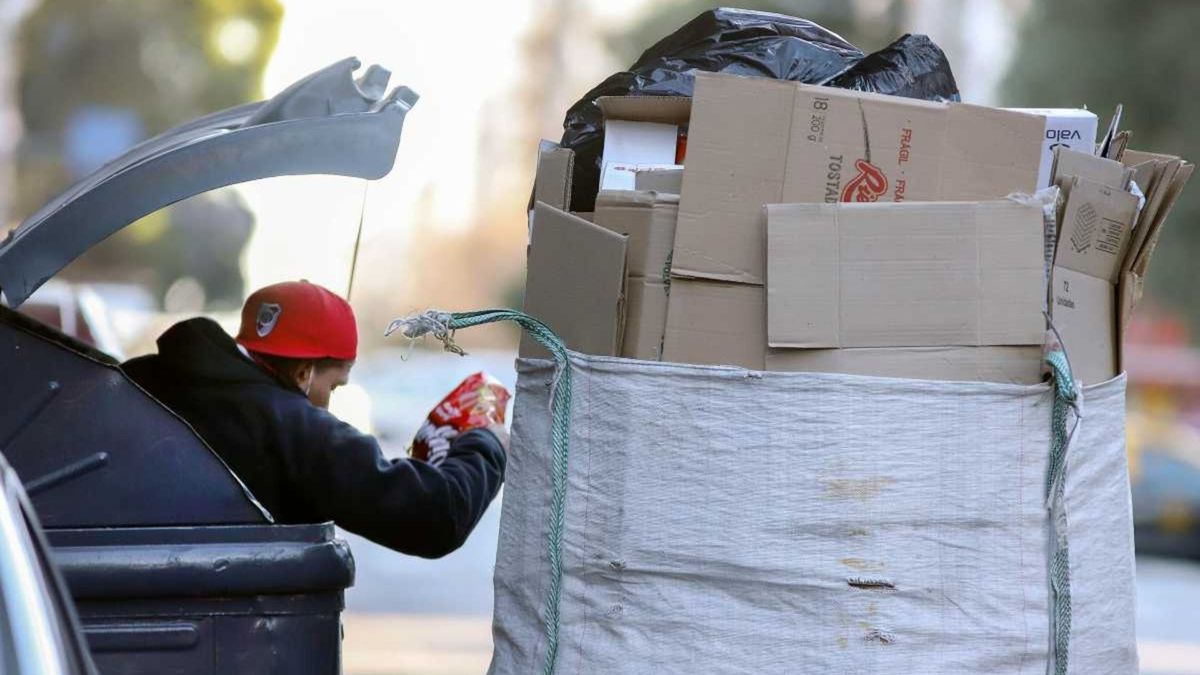According to what is indicated by the agency, “this implies that, for the universe of the 31 urban agglomerations of the EPH (Permanent Household Survey), below the line of poverty they find each other 10,806,414 people. And, within that set, 2,384,106 of people are homeless”.
Meanwhile, if the numbers are transferred to the total population (estimated at 45.8 million by 2021), they were approximately 17.1 million individuals poor in Argentina during the last six months of last year.
“Despite the improvement reflected in the latter part of last year, indicators social groups have not yet recovered the levels prior to the pandemic (which reflected the effects of two consecutive years of falling activity). Poverty still remains 1.8 pp above the levels of the second half of 2019 (the equivalent of 865 thousand people)”, they analyzed from the LCG consultancy.
poverty in argentina
NA
concern for the future
Beyond the data for the second half of last year, the evolution of the inflation and lower growth in the level of exercisecould impact the poverty levels of the current semester.
“The election spring that the second half of last year gave us bore fruit with the recovery of employment, a fall in unemployment, relative salary improvements, greater coverage and an increase in social allowances, and, therefore, a consequent drop in the rate of indigence and poverty urban. These results are explained by a revival bubble post-Covid economic crisis, together with strong public investment, keeping tariff prices controlled, all of which resulted in an increase in consumption,” explained Agustín Salvia, head of the Social Observatory of the Argentine Catholic University (UCA).
“However, there is not much to celebrate. In part, because these results are poor in themselves. When we look in historical perspective, the deterioration in the standard of living of broad sectors, beyond the growing social inequalities, it appears that Poverty levels are similar to those at the end of 2019when the situation was already very critical and, even, labor informality, the level of public employment, the coverage of social programs, and, not least, there were expectations of a change of direction, “he said.
In this context, the current economic reality, with high inflation, can affect the levels of poverty during the current semester. “Indeed, also because there will be a minor growth, with also decreasing effects on employment and salary adjustments will lag behind. It is not an election year and they should take advantage of it to balance, even partially, the public accounts following an agreement with the IMF,” Salvia explained to Ámbito.
“During the first half of this year there could be a trend breakabove all because the perspective is that the inflationwhich hits more those who have less, be it near the 30% in the first half of the year. Furthermore, even the total basic basket it is rising at a much faster rate than inflation. And I think that is going to be maintained in the remainder of this semester to a greater or lesser extent,” Aldo Abram, director of Libertad y Progreso, told this newspaper, adding: “It is also true that the economy is slowing down: then, there is a factor that increases poverty, which is the acceleration of inflation; and on the other hand there is a factor that is going to collaborate less so that this rise in poverty does not occur, which is the slowdown in the level of activity”.
Poverty Cartoneros Recyclers Buenos Aires.jpg

Courtesy: DOCTV
What do consultants expect?
“Beyond this specific data, we are not optimistic regarding a consolidation in the moderation of poverty rates during 2022. The acceleration of inflation in the first months of the year will fully impact household income”, they pointed out from the LCG consultancy.
From the firm they emphasized that the income of a good part of the workers “is not being updated at the same speed as prices” and that little growth in activity will generate “little traction on the Work market”. “In this sense, the bulk of the workers (33% are informal) will be far from compensating for the fall of the last four years. Thus, the eradication structural of the poverty through the labor market will not be viable in the short term”, remarked the consultant, who pointed out: “For these reasons, we understand that current levels of poverty and indigence should be interpreted as a new floor. We expect an increase in the poverty and indigence rates for the current year; the final level will basically depend on the inflationary dynamics”.
For their part, from ACM they highlighted that, although both poverty and indigence improved in the second half of 2021, “this is typical of the recovery dynamics observed during the year.” “As far as 2022 is concerned, the inflationary dynamics seems to present a risk for poverty and indigence rates for the first half of this year. To a large extent, the result we see will end up depending on the ability of revenues to adjust to this new context”, they concluded.
Meanwhile, from CEPA, they analyzed that the “indicator could show a trend growing at first trimester of the year and decreasing in the second”. “In order to aspire to this, first of all, prices must be stabilized at current values, and the joint ventures (which are closing as of April) help compensate for the loss of purchasing power in the first quarter,” they underlined.
Source: Ambito
David William is a talented author who has made a name for himself in the world of writing. He is a professional author who writes on a wide range of topics, from general interest to opinion news. David is currently working as a writer at 24 hours worlds where he brings his unique perspective and in-depth research to his articles, making them both informative and engaging.




